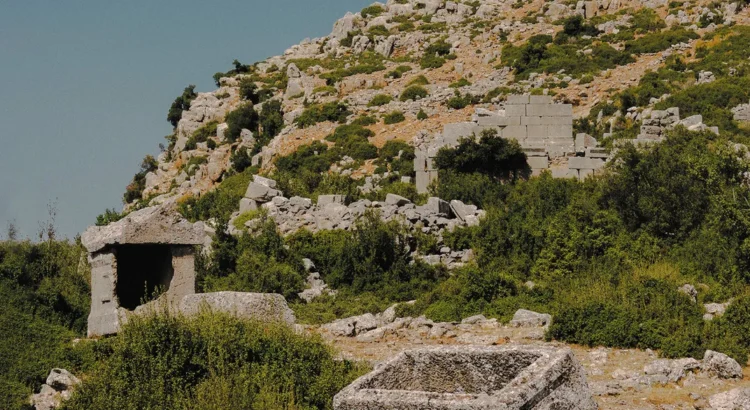
There is a journey unlike any other—a journey not just through space, but through sacred time. To trek across biblical landscapes is to walk in the footsteps of prophets, kings, and shepherds. It’s to breathe the same desert air, to watch the same sunrise over the hills, and to feel the power of stories that have shaped civilizations for millennia.
Whether you’re a seeker of faith, a lover of history, or a curious traveler looking to trace the roots of humanity’s most enduring spiritual narratives, this pilgrimage through the Holy Lands offers a transformative encounter with both the land and the stories written upon it.
Where History Meets Faith
The Bible is not just a book—it is a geographical chronicle, a map of spiritual and historical moments that unfolded across ancient hills, valleys, deserts, and seas. From the wilderness of Sinai to the olive groves of Galilee, from Jerusalem’s ancient stones to the dusty roads of Nazareth, the lands of the Bible hold more than ruins—they hold resonance.
The landscapes described in Scripture are still here. They are living, breathing environments where ancient texts and natural beauty converge. Trekking through these regions is not about checking off tourist attractions—it’s about embodying the stories, feeling them in your bones, and understanding the land that cradled some of the world’s most profound spiritual revelations.
The Judean Wilderness: Solitude And Revelation
Start your journey in the Judean Desert, a place of raw, haunting beauty where silence reigns and the wind whispers ancient truths. This is the land where John the Baptist cried out in the wilderness, where Jesus fasted for forty days, and where countless prophets sought solitude to hear the voice of God.
Trekking through the Judean hills, you’ll pass caves etched into cliffs, dry riverbeds that burst into life during the rains, and stony paths that seem untouched by time. The silence is profound—and it is in that silence that many travelers feel a surprising sense of spiritual connection.
At sunrise, the rocks glow golden, and shadows stretch across the desert floor. It’s easy to imagine an ancient prophet walking just ahead, disappearing over the ridge.
Mount Sinai: The Mountain of Divine Encounter
Next, head south into the Sinai Peninsula, a land revered in Judaism, Christianity, and Islam. The trek up Mount Sinai (Jebel Musa) is a defining experience. According to tradition, it was here that Moses received the Ten Commandments, enveloped in fire, cloud, and mystery.
Most pilgrims begin their ascent in the darkness of early morning. Guided only by the stars and torchlight, you follow the same steep path that countless others have walked for centuries. By the time you reach the summit, dawn is breaking, casting fiery light across barren peaks.
The moment is humbling and unforgettable. Whether you’re religious or not, there’s a palpable sense of encounter—as if heaven has briefly touched earth. Standing on the rocky summit, you understand why this mountain has stirred awe and reverence for over three thousand years.
Galilee: Where Miracles Touched the Earth
From the desert, travel north to Galilee, a region of green hills, freshwater lakes, and quiet villages. Here, you move from the rugged to the pastoral, from severity to serenity. This was the land of Jesus’s ministry—a place of teachings, parables, and miracles.
Trek along the Jesus Trail, a 65-kilometer route that connects Nazareth to Capernaum, winding through olive groves, fields of wheat, and forested hills. Along the way, visit the Mount of Beatitudes, where the Sermon on the Mount is believed to have been delivered, and walk along the Sea of Galilee, where Jesus is said to have walked on water and calmed the storm.
The villages and paths retain a timeless charm. Stone houses, ancient wells, and shaded fig trees provide moments of reflection. Local hospitality is warm and rooted in tradition, and every stop is a chance to deepen your understanding of the biblical narrative.
Jerusalem: A City of Layered Time
No biblical journey is complete without Jerusalem. The Holy City stands as a crossroads of religion, politics, and history—one of the most spiritually charged places on earth. Here, time folds upon itself.
Trek through the Old City, with its labyrinth of alleys and quarters—Jewish, Muslim, Christian, and Armenian—each with its own sacred landmarks. Visit the Western Wall, the Church of the Holy Sepulchre, and the Dome of the Rock. Walk the Via Dolorosa, the path traditionally believed to follow Jesus’s steps to crucifixion.
As you ascend the Mount of Olives, pause at the Garden of Gethsemane, where olive trees, ancient and gnarled, still grow. In Jerusalem, every stone has a story, every courtyard echoes with prayers, and every hill holds centuries of hope and sorrow.
It’s a place that stirs the soul and demands contemplation.
The Jordan River and Baptismal Memories
From Jerusalem, journey east to the Jordan River, whose waters form one of the most iconic natural landmarks of biblical lore. It was here that the Israelites crossed into the Promised Land, and where Jesus was baptized by John the Baptist.
Today, many travelers take time to pause at Qasr al-Yahud, the traditional baptismal site. Surrounded by palm trees and the sound of rushing water, this sacred stretch of river offers a chance to reflect—or even participate in a baptismal ritual.
The river may be narrow and muddy in places, but its spiritual depth is immeasurable. Standing in the water, watching ripples form under your feet, you feel part of a long chain of seekers drawn to this holy current.
Petra and the Wilderness of Edom: Beyond the Borders
While the biblical lands are centered in Israel and Palestine, stories extend across borders into modern-day Jordan, Egypt, and beyond.
One remarkable trek takes you to Petra, the ancient Nabatean city carved into red sandstone cliffs. While not directly mentioned in the Bible, Petra lies in the region of Edom, home to Esau’s descendants. The city’s grandeur, hidden in a mountainous valley, evokes a sense of sacred mystery and forgotten kingdoms.
From there, hiking through the Dana Biosphere Reserve or the Wadi Rum desert feels like traveling through the wilderness where prophets wandered, prayed, and survived by faith alone. These trails offer dramatic landscapes, stark beauty, and rare encounters with Bedouin tribes who still live much as they have for generations.
Connecting Past and Present
What makes this kind of trekking experience truly unique is the fusion of ancient and modern. As you walk through biblical landscapes, you meet contemporary cultures still shaped by these stories.
You may share tea with a shepherd in the Negev, hear ancient psalms sung in Aramaic in a desert chapel, or see young pilgrims climbing the same rocky paths as monks and mystics did centuries ago.
There is a deep continuity of faith and tradition here. The land is not a museum—it is alive, and those who dwell in it are its living stewards.
A Pilgrimage for All
You don’t need to be a theologian or devout believer to be moved by this journey. These landscapes invite questions as much as they offer answers. They stir memory and imagination, speak to human longing, and challenge you to find meaning in the silence between steps.
For some, it’s a return to faith. For others, it’s a connection to heritage, history, or humanity. Many experience a surprising inner clarity, as if walking these trails strips away modern noise and brings you face-to-face with your deeper self.
Practical Tips for Your Biblical Trek
- Best Time to Visit: Spring (March–May) and autumn (September–November) offer pleasant weather and lush scenery.
- Gear Up: Bring sturdy hiking shoes, breathable clothing, a hat, and sun protection. Many trails involve rocky terrain and direct sunlight.
- Stay Hydrated: Water is essential, especially in desert treks.
- Guides: Local guides offer not only safety but invaluable insight into biblical, cultural, and geographical significance.
- Respect: Many sites are active religious places. Dress modestly and observe local customs.
Final Reflections: Walk the Word
To trek across biblical landscapes is to step out of ordinary time and into a story that has shaped the moral, spiritual, and cultural foundations of millions. It is not just a journey across terrain—it is a pilgrimage of the soul.
In these hills and deserts, among ancient stones and sacred waters, you find more than history. You find yourself.
So tie your laces, open your heart, and begin your walk. The land is waiting—and the stories are ready to speak.




